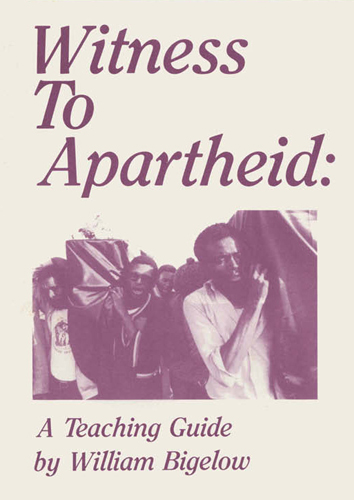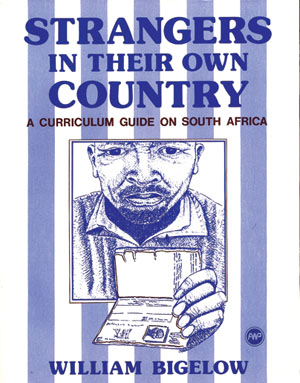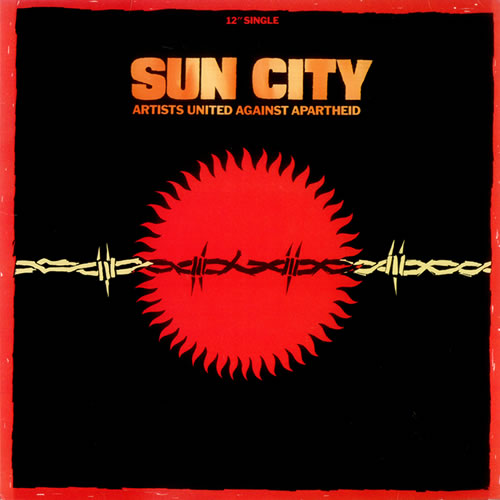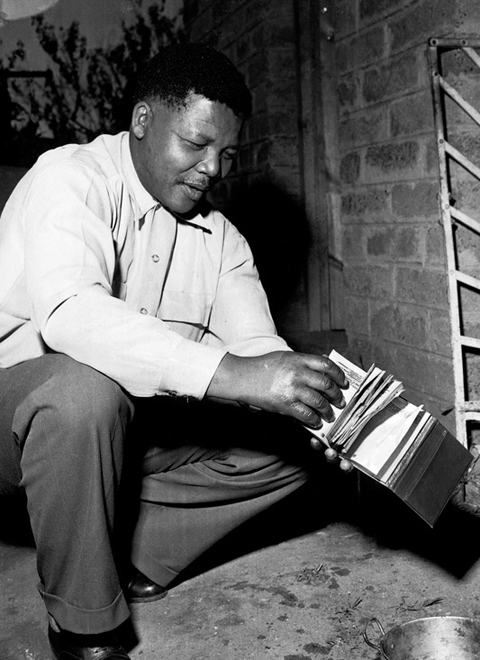 This Witness to Apartheid teaching guide was developed for the 1986 Academy Award nominated documentary film of the same name, directed by Sharon I. Sopher. The teaching guide was written to provide a week’s lessons which help students experience the frightening — but, paradoxically, hopeful — world of South Africa under apartheid. During a week as “witnesses to apartheid,” students:
This Witness to Apartheid teaching guide was developed for the 1986 Academy Award nominated documentary film of the same name, directed by Sharon I. Sopher. The teaching guide was written to provide a week’s lessons which help students experience the frightening — but, paradoxically, hopeful — world of South Africa under apartheid. During a week as “witnesses to apartheid,” students:
- simulate the inequities of life in South Africa, and learn about the repression used to prevent change;
- see and hear South Africans describe some of the horrors and hopes of life in that country;
- confront the dilemmas facing black South African student activists through role play; and
- communicate directly to their peers in South Africa.
By the end of the week, students develop a framework for understanding the explosive events in South Africa. As they begin to see why children their own age risked their lives to end apartheid, they deepen their own understanding of human rights and democracy. And as students grasp the enormity of injustice in apartheid South Africa, they consider their own responsibilities as global citizens.
The lessons include a simulation and role play. The following handouts are provided:
- Handout #1 Privileged Minority
- Handout #2 The Bantustans
- Handout #3 Human Rights Fact Sheet
- Handout #4 Learning Was Defiance
- Handout #5 South African Student
- Handout #6 Challenging “Gutter Education”
About the Film
The film Witness to Apartheid is no longer available for purchase. However, key sections of the film can be viewed on the three YouTube clips below.
Arrest
Afrikaaner
Torture
Find Witness to Apartheid via WorldCat.
The story Witness to Apartheid tells is stark: children in South Africa being beaten, detained, even tortured. As one human rights report summarized, the South African government waged a “war against children.”
The images of Witness to Apartheid were not seen on the evening news: a father shares his feelings about the cold-blooded murder of his son by a South African policeman; a young woman describes the torture she experienced while in police custody; a young man mumbles that he doesn’t want to go on living — his beatings by security forces have left him permanently disabled.
Some of the individuals and groups referenced in the film are: Archbishop Desmond Tutu, the Congress of South African Students (COSAS), Curtis Nkondo, the United Democratic Front (UDF), Johann Fourie, Dumisani Kumalo, the Department of Education and Training (DET), Jacob Molefe, COSATU, the Detainees Parents Support Committee, Bantustans, the Group Areas Act, the South African Council of Churches, the African National Congress (ANC), the Pan Africanist Congress (PAC), the State of Emergency, the Lawyers Committee for Human Rights, and the American Committee on Africa.
The film documents that in apartheid South Africa murder, detention, torture occurred not as aberrations, but systematically — sanctioned at the highest levels. To be young and black in South Africa was to be a target, a human rights offense waiting to happen.
Published by California Newsreel.










Twitter
Google plus
LinkedIn